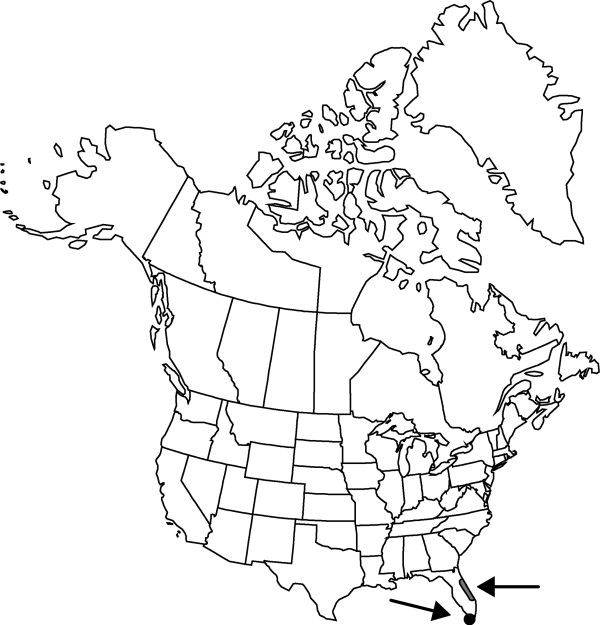Harrisia fragrans
Cact. 2: 149, fig. 216, plate 19, figs. 1, 2. 1920.
Stems erect, reclining, or clambering, to 3–5 m; ribs 10–12. Spines 9–13 per areole, 2–4 cm, tipped yellow or completely yellowish when young. Flowers: flower tube 18–20 cm, smooth or scarcely ridged; scales flat or nearly so, with axillary tufts hairs; hairs white, soft, 10–15 mm; buds with white hairs. Fruits orange-red at maturity, obovoid, 60 mm diam.
Phenology: Flowering May.
Habitat: Mostly remnants of oak-red bay scrub on dry sand dunes, usually with Opuntia
Elevation: 0 m
Discussion
Of conservation concern.
According to L. D. Benson (1982), Harrisia fragrans is a “canelike or shrubby plant [that] may be nearly lost in other vegetation growing up in disturbed areas of fields or the edges of the forest. Sometimes it stands above herbs and bushes.” It is easily cultivated, and J. K. Small (1932) observed “when planted en masse its hundreds of flowers present a rare sight all through the night. In fruit it is an attractive sight and also a great attraction as food for birds, many of whom are ravenously fond of the seeds.”
Harrisia fragrans differs from the Caribbean H. eriophora (Pfeiffer) Britton in fruit color (orange-red versus yellow), stem ribbing (10–12 versus 8–9), and spine number and morphology (9–13 per areole, 2–3 cm long, yellow tipped versus 6–9 per areole, 2.5–4.5 cm long, black tipped, respectively). L. D. Benson (1982) recognized these differences but included both taxa within a relatively broad species concept, emphasizing their copious production of long hairs in the flower areoles and other features.
D. F. Austin (1984) reported that the range of Harrisia fragrans is restricted to a 0.5–1.5 kilometer strip in St. Lucie County, Florida, in the immediate vicinity of the original (type) locality. He noted that other populations identified as this taxon actually are “Cereus gracilis,” which is presumably H. simpsonii.
Harrisia fragrans is in the Center for Plant Conservation’s National Collection of Endangered Plants.
